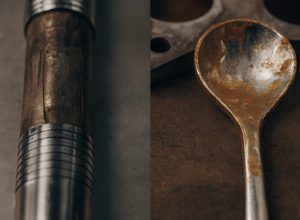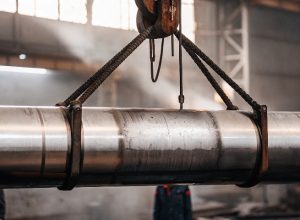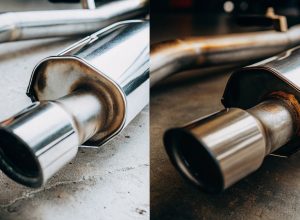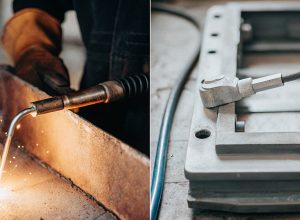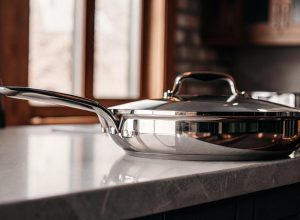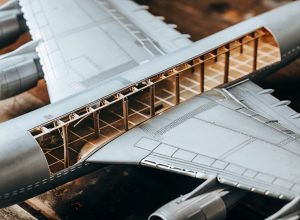Исключительная коррозионная стойкость титанового листа может кардинально изменить долговечность химических установок и сократить время дорогостоящих простоев. В этом руководстве рассматриваются механизмы коррозии титанового листа, оптимальные варианты сплавов, особенности производства и факторы стоимости, чтобы помочь инженерам химической промышленности в выборе материала.
Более 95% титана используется в химической промышленности. 1, 2, 7 и 12 классы благодаря их превосходной коррозионной стойкости. Титан демонстрирует исключительную стойкость в агрессивных хлоридных, кислотных и морских средах благодаря стабильной, самовосстанавливающейся оксидной пленке.
Титановый лист: Основы коррозионной стойкости в химических средах
Защитная оксидная пленка титана обеспечивает его непревзойденную устойчивость к коррозии в различных агрессивных химических условиях.
Оксидная пленка титана обеспечивает исключительную защиту от коррозии
Титан самопроизвольно образует плотно прилегающую и стабильную пассивную пленку TiO2, которая самовосстанавливается в присутствии кислорода или влаги. Толщина этого оксидного слоя обычно составляет 12-16 ангстрем. В течение многих лет он может увеличиваться до 250 ангстрем или утолщаться в результате анодирования или термического окисления. Пленка обеспечивает надежную защиту от общей, щелевой, стрессовой и гальванической коррозии. Только фтористоводородная кислота и ее производные могут эффективно разрушить этот защитный барьер.
Сравнительные характеристики сплавов и влияние легирования на коррозионную стойкость
Выбор правильного сплава имеет решающее значение для долгосрочной работы химических заводов. 1, 2, 7 и 12 классы являются основными вариантами благодаря оптимизированным профилям коррозии.
Добавки палладия и рутения значительно повышают устойчивость к щелевой коррозии и восстановительным кислотным условиям за счет снижения перенапряжения водорода. Повышенное содержание кислорода или железа может снизить коррозионную стойкость, особенно в агрессивных условиях. Альфа- и альфа-бета-сплавы не поддаются термообработке, но сохраняют высокую коррозионную стойкость; сплавы с бета-фазой могут улучшить формуемость при сохранении стойкости.
| Класс | Состав (wt%) | Коррозионная стойкость Основные характеристики | Типовые применения |
|---|---|---|---|
| 1 класс | 99,5% Ti + O, Fe (низкий) | Высочайшая пластичность, отличная коррозионная стойкость в слабых кислотах и морской воде | Морская арматура, оборудование для химической обработки |
| 2 класс | >99% Ti, низкое содержание примесей | Наиболее часто используется; сбалансированная коррозионная стойкость и свариваемость | трубопроводы химических установок, теплообменники |
| 7 класс | Ti + 0,12-0,15% Pd | Повышенная устойчивость к щелевой коррозии и восстановительным кислотам | Отбеливатели, хлоридные и органические кислотные среды |
| 12 класс | Ti + 0,3% Mo + 0,8% Ni | Превосходная устойчивость к щелевой и точечной коррозии, особенно в смешанных кислотных и хлоридных средах. | Теплообменники, опреснение, компоненты нефтеперерабатывающих заводов |
| Класс 5 (Ti-6Al-4V) | Ti + 6% Al + 4% V | Хорошая прочность, но меньшая коррозионная стойкость по сравнению с марками CP | Аэрокосмическая промышленность, медицинские имплантаты (в меньшей степени используются в высокоагрессивных химических средах) |
Применение и изготовление титановых листов в химической промышленности
Уникальный коррозионный профиль и механические свойства титанового листа позволяют широко использовать его в критически важных компонентах химических установок, а передовые методы производства обеспечивают долговечность.
Основные области применения титанового листа в химической промышленности
Титановый лист широко используется в теплообменниках, реакторах, резервуарах для хранения и трубопроводных системах, подвергающихся воздействию морской воды и технологических потоков с высоким содержанием хлоридов. Благодаря устойчивой пассивации он является предпочтительным материалом для работы с окислительными кислотами, такими как азотная, хромовая и перхлорная. Его устойчивость распространяется на промышленный хлор, гипохлорит, отбеливатели и обработку органическими кислотами. Согласно отраслевым данным, некоторые производители, такие как ТАЙМЕТ предоставляют гарантию до 40 лет от коррозионного разрушения правильно примененных компонентов.
Ознакомление с производством: Сварка, формовка и обработка поверхности
Титановый лист хорошо сваривается сваркой вольфрамовым электродом в среде инертного газа (TIG) в чистых, сухих условиях с защитой инертным газом. Как правило, предварительная/последующая термическая обработка не требуется, но тщательная очистка для удаления загрязнений имеет решающее значение. Термическое оксидирование или анодирование могут использоваться для утолщения оксидных пленок для повышения коррозионной стойкости перед воздействием. Загрязнение поверхности железом может вызвать локальную коррозию; травление в растворах азотной и фтористоводородной кислоты устраняет этот риск.
Всестороннее рассмотрение коррозии и экономические преимущества титанового листа
Понимание механизмов коррозии титана и ее последствий для стоимости позволяет инженерам-химикам оптимизировать затраты на жизненный цикл и надежность при проектировании оборудования.
Ищете прочные титановые листы и пластины?
Ознакомьтесь с нашим ассортиментом высококачественных титановых листов и плит, предназначенных для аэрокосмической, химической и морской промышленности. Наша продукция отвечает строгим стандартам и обеспечивает надежность в сложных условиях.
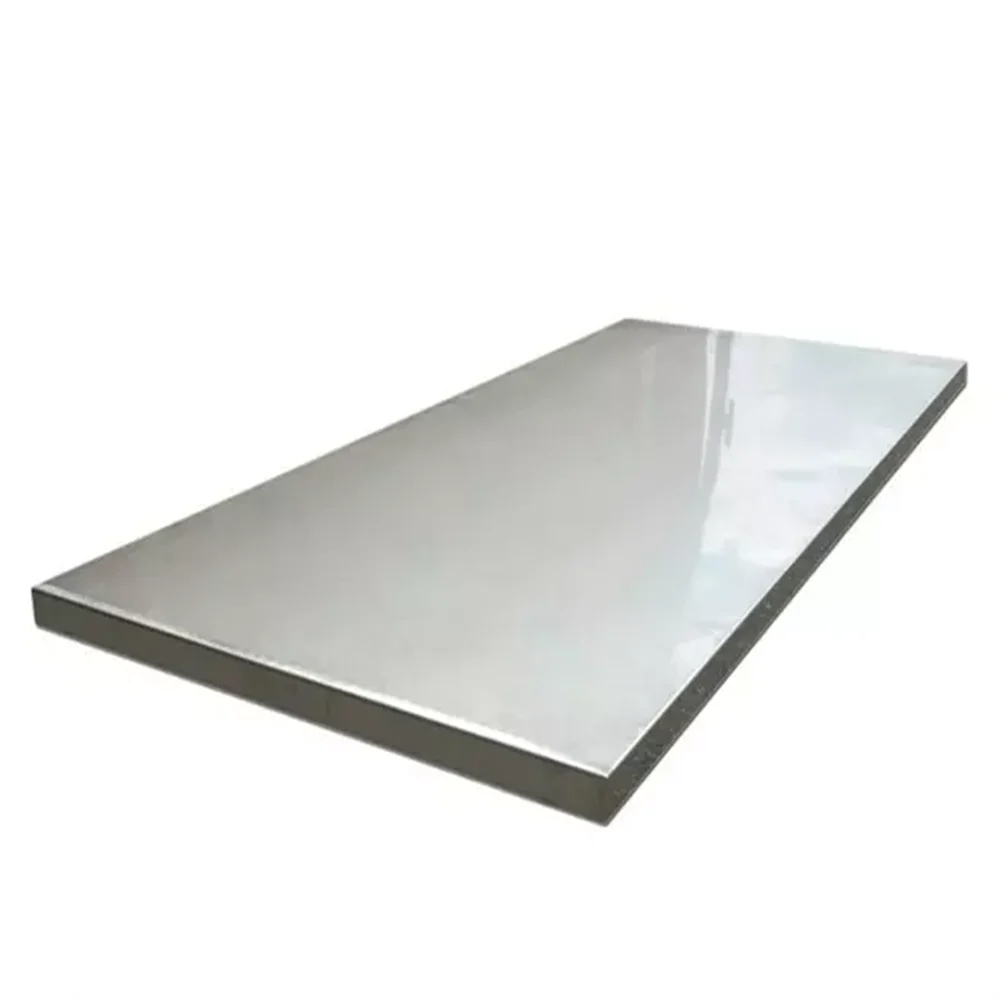
Детальное коррозионное поведение титанового листа в химических процессах
Титан противостоит общей коррозии со скоростью, как правило, <0,04 мм/год в окислительных средах, включая морскую воду. Щелевая коррозия может возникать в агрессивных рассолах, насыщенных хлоридами, при повышенных температурах, что контролируется Pd-содержащими марками. Коррозионное растрескивание под напряжением практически не встречается в марках 1, 2, 7 и 12 в типичных условиях химических заводов. Титан не подвержен коррозии под микробиологическим воздействием (КМВ), хотя биообрастание требует управления.

Последствия использования титанового листа на химических заводах для снижения стоимости жизненного цикла
Хотя первоначальная стоимость материала выше, чем у нержавеющей стали, более длительный срок службы и сокращение объема технического обслуживания снижают общую стоимость владения. Способность надежно работать в морской воде и кислотных средах предотвращает дорогостоящие утечки и простои. Гарантийные сроки до 40 лет свидетельствуют об исключительной надежности титана. Уменьшенный вес (на 50% меньше, чем у стали) способствует экономии на конструкции и упрощению монтажа.
| Класс | Основные легирующие элементы | Устойчивость к коррозии | Примечания по изготовлению | Типичные примеры применения |
|---|---|---|---|---|
| 1 класс | В основном чистый Ti (O ≤ 0,18%) | Отличная общая коррозионная стойкость; низкая прочность | Высокая пластичность и формуемость; отличная свариваемость | Трубопроводы для морской воды, химические емкости, кожухи теплообменников |
| 2 класс | Чистый Ti (прочность немного выше, чем у Grade 1) | Тот же диапазон коррозии, что и у класса 1; широко распространен | Хорошие характеристики формовки и сварки | Теплообменники, системы трубопроводов, резервуары для хранения |
| Степень 7 (Ti + 0,12-0,15% Pd) | Добавление Pd для повышения устойчивости к восстановительной кислоте | Выдающаяся стойкость к щелевой коррозии; работа с кислотами | Свариваемость аналогична CP; дороже | Отбеливающие установки, хлорное оборудование, оборудование для кислотных процессов |
| Класс 12 (Ti + 0,3% Mo + 0,8% Ni) | Mo + Ni для повышения стойкости к точечной коррозии и образованию трещин | Наилучшая устойчивость к щелевой коррозии в хлоридах и кислых соляных растворах | Немного меньшая пластичность; сваривается с осторожностью | Теплообменники для опреснения, нефтепереработки, химических заводов |
| Класс 5 (Ti-6Al-4V) | Al + V для прочности и термостойкости | Хорошая коррозионная стойкость, но ниже, чем у марок CP | Сложнее поддается формовке; требует специальной сварки | Аэрокосмические компоненты, конструкционное оборудование (в меньшей степени используется на химических заводах) |
Часто задаваемые вопросы
Какие марки титана наиболее подходят для работы в агрессивных химических средах?
Используйте сплавы марок 1 и 2 для работы с химическими веществами общего назначения, сплав марки 7 для повышения стойкости в средах с восстановительной кислотой и хлором, а также сплав марки 12 для повышения стойкости к образованию трещин и точечной коррозии в среде хлорида/рассола и кислых солей. Избегайте использования менее коррозионностойких сплавов, таких как Grade 5, в высокоагрессивных средах.
Как титан противостоит коррозии в морской воде и кислой хлоридной среде?
Титан образует стабильную и самовосстанавливающуюся оксидную пленку (TiO2), которая служит эффективным барьером для большинства агрессивных химических веществ и предотвращает локальную коррозию в обычных условиях. Легирующие добавки, такие как Pd и Mo, усиливают это поведение, повышая устойчивость к щелевой коррозии в более жестких условиях.
Существуют ли особенности производства при работе с титановым листом для химических заводов?
Да, обеспечьте сварку под защитой инертного газа (TIG) с чистыми и сухими поверхностями, чтобы избежать охрупчивания; чистое травление имеет решающее значение для удаления загрязнений железом. Холодная штамповка требует смазки и внимания к радиусам изгиба из-за склонности титана к заеданию и более низкого модуля упругости. Термическое оксидирование или анодирование могут усилить защиту поверхности.
Каковы типичные режимы отказов титанового листа в химических технологических установках?
Основные механизмы разрушения включают щелевую коррозию при высоком содержании хлоридов и низком pH в застойных зонах, водородное охрупчивание при катодной поляризации или дефектных поверхностях, а также редко локализованную питтинговую коррозию при воздействии анодных потенциалов, превышающих защитные пределы.
Какова экономическая целесообразность использования титанового листа в оборудовании химических заводов?
Хотя первоначальная стоимость титановых сплавов выше, их превосходная коррозионная стойкость и легкость снижают время обслуживания, простоев и конструктивные требования, что приводит к снижению общих затрат на жизненный цикл и эксплуатацию, часто гарантируя до 40 лет использования в критически важных приложениях.



